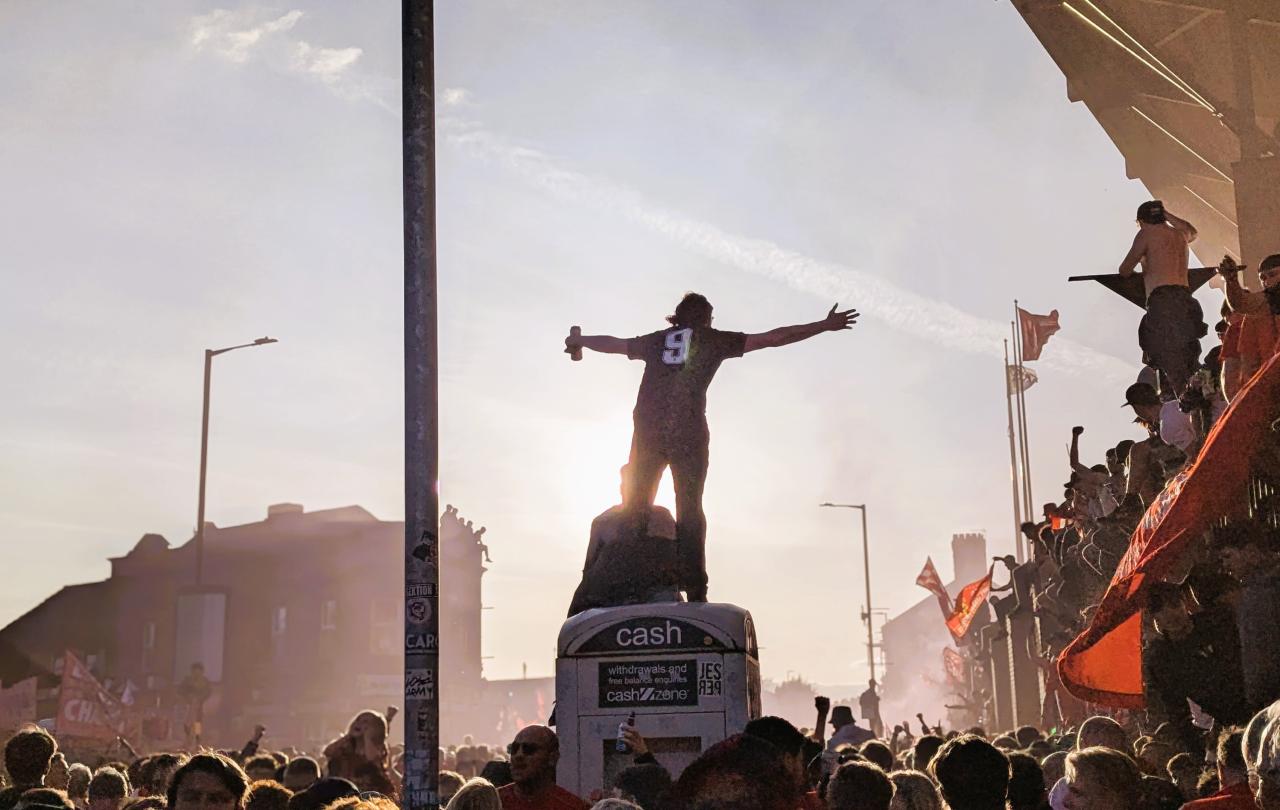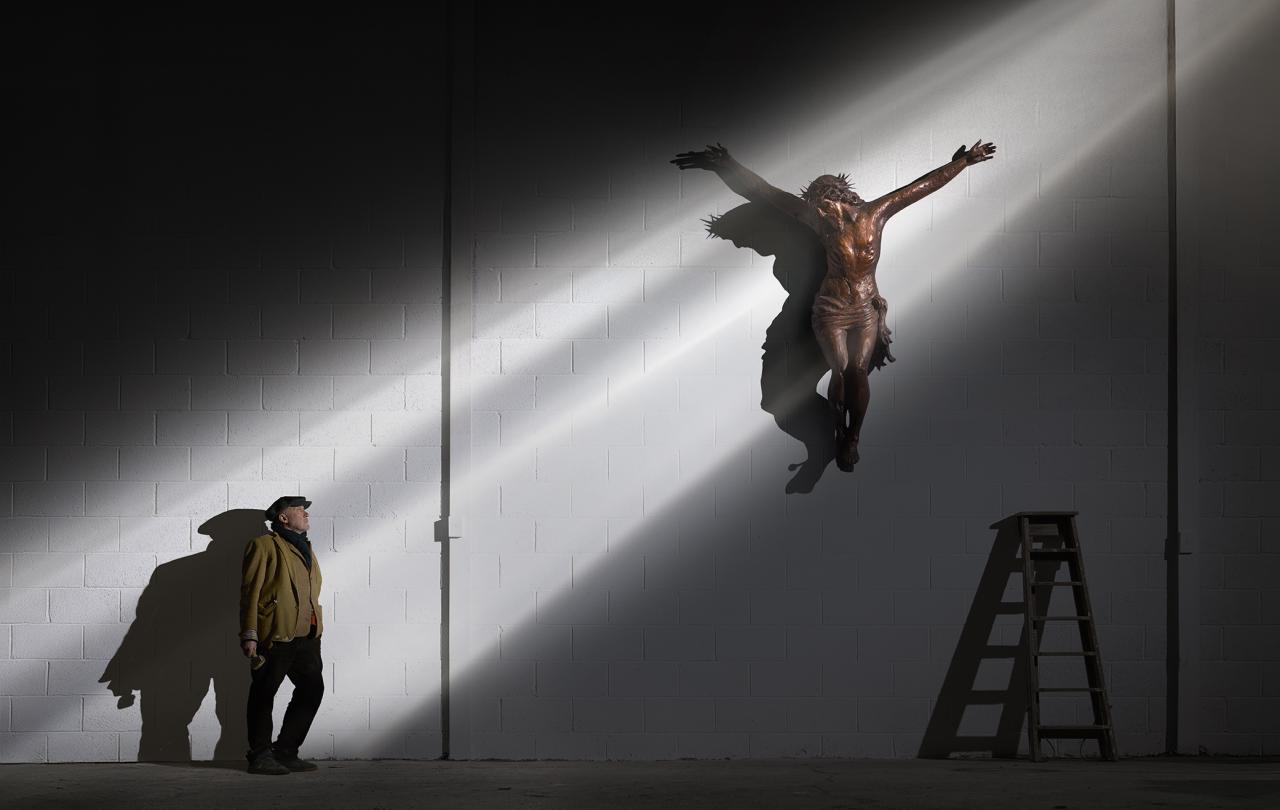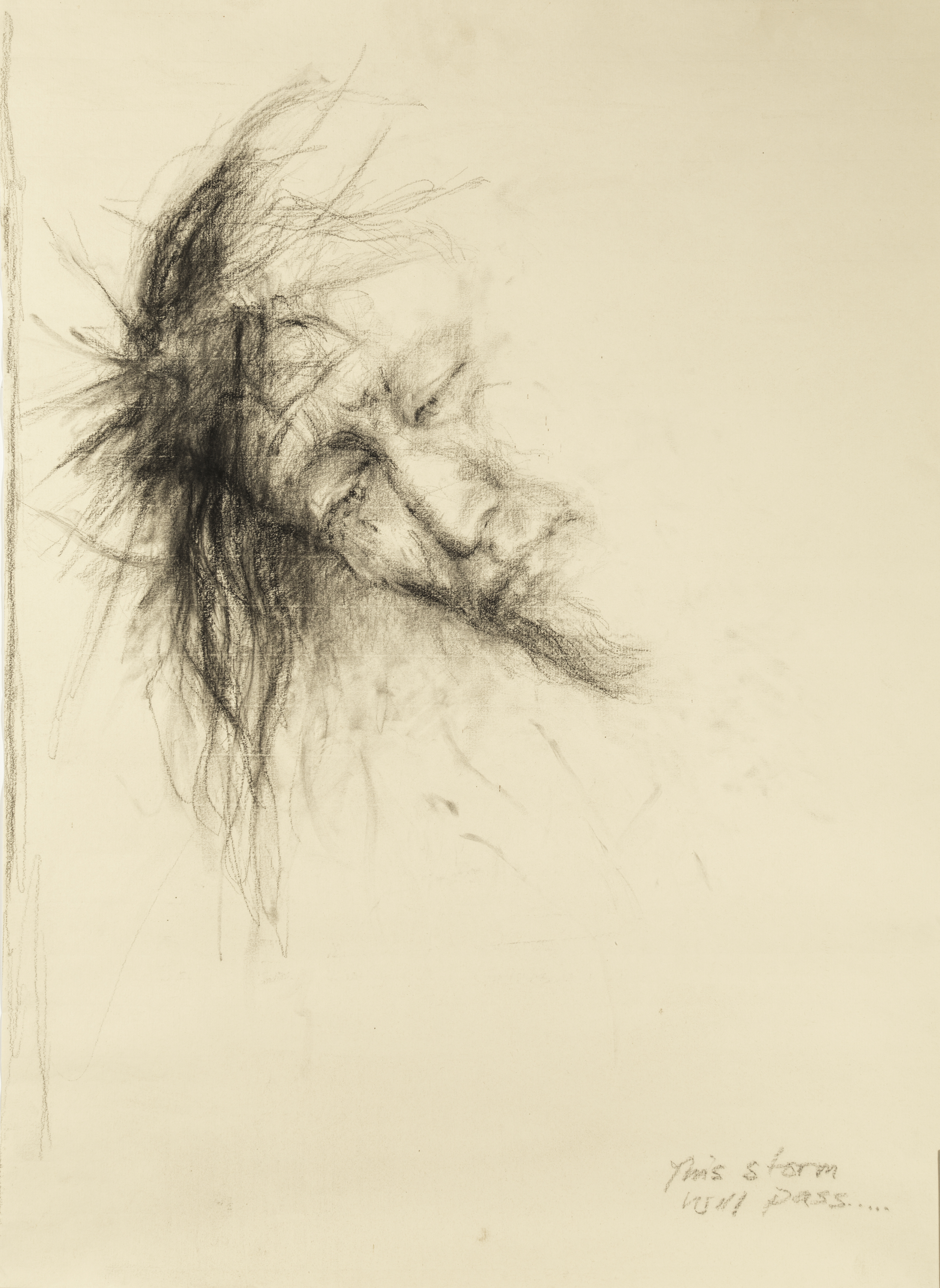
“A Liverbird upon my chest
We are men of Shankly’s best
A team that plays the Liverpool way
And wins the Championship in May”
This is the song that has thundered around Anfield this season. A prophecy willed into existence amidst the departure of Jürgen Klopp, Liverpool’s Shankly for the twenty-first century. Surely not?
But then.
Arsenal drop points and Manchester City drop points and Liverpool don’t drop points. Again and again and again, until Liverpool needs just one more point to make the song a reality. The next game? Spurs at Anfield. At Anfield. As fate would have it, my wife and I had front-row tickets, thanks to my father- and mother-in-law booking a fortunately timed (for us, anyway) holiday and not being able to use their season ticket. (Thanks, Jeff and Janet).
As we got to the stadium the place thrummed with anticipation. Liverpool is a city that loves to sing, and to dance, and to cuddle; a city built for joy and for love. And here is Liverpool in all its splendour, drenched in glorious, league-winning sunshine, as people sing and dance and cuddle. Most people here won’t have a ticket; Anfield only holds 60,000. People are here just to be here, to be present; around for when it happens.
The game kicks off and the noise is deafening. Liverpool only needs to avoid defeat in the next ninety minutes and the league is theirs. Spurs, inconsistent all season, surely haven’t got the mettle to get anything from the game. Have they?
But then.
Spurs score. An unmarked header from a corner. As simple as it gets. Former Liverpool player Dom Solanke, no less. It was never going to be easy. 2025 marks the twentieth anniversary of the Miracle of Istanbul; if any club knows how to make a game of football difficult for themselves, it’s Liverpool. The ground turns from jubilant to tense.
But then.
Salah passes to Szoboszlai who passes to Diaz who scores. Three short passes and Spurs are carved open and all our wildest dreams have come true.
But then.
Flag’s up. Offside. No goal. Doesn’t count. Was it Szoboszlai or Diaz offside? Was it close? Doesn’t matter. The ground turns from jubilant to tense.
But then.
VAR – which I’ve always said was really good, actually, I promise – overturns the flag. Goal. Liverpool are level. The ground erupts. But there’s still work to do. While a draw would see Liverpool over the line, there’s a lot of football left to go before the ninety minutes is up
And so Liverpool press and press and press and press. They hound Spurs, hassle them, harass them. Ryan Gravenberch has the ball on the edge of their box and is almost certainly fouled. The ref – who, to his credit, did his utmost to try and ensure a game of football didn’t break out because we wouldn’t possibly want that – decides otherwise. Nothing to see here. Play on.
But then.
Alexis Mac Allister picks up the loose ball, takes a touch, and thumps it – properly wallops it – right into the top corner. Anfield shakes and I’m being hugged by someone from somewhere unseen. Now is the time when it happens, when we win the thing we’ve waited so long to win. Being a football fan doesn’t get better than this.
But then.
It does. Liverpool have a corner. The ball comes in, Cody Gakpo collects, wriggles, turns, shoots, scores. No coming back for Spurs now. Bedlam. Pandemonium. Carnage. He runs to the corner nearest us, top off, a message on his vest underneath. Daylight.
“What does his shirt say?” my wife asks. I strain, trying to see, but I can barely remember my own name at this point so I can hardly be expected to read now, can I?
But then.
There he is, just meters from us, walking back with his top still off, the message clear:
I belong to Jesus
There are two more goals in the second half and the game finishes 5-1 and Liverpool are champions. But honestly, it was all over bar the singing at half-time. And there was a lot of singing still to do. Each player worthy of their own song, the club’s past eulogised over in verse and chorus. And Liverpool’s past means they are no stranger to success. This league title means they are now indisputably, by any metric going, England’s most successful football club. (Hiya, Sir Alex, if you’re reading this).
But the Premier League has remained oddly elusive: this is only the second time the club has won the competition since it formed in 1992 (although they had won eighteen top-flight titles prior to this; there was, I’m told, still football before the early 90s). And the last league win came at the start of lockdown.
What’s the point of winning if I can’t be there to hug you and you and you and you?
Look: I celebrated that Covid League title; of course I did. But it felt odd, and the oddness has only increased as normality has gradually returned to life since the pandemic. My wife has a picture of me opening a bottle of champagne in our otherwise empty living room. The players life the trophy in an otherwise empty stadium. With hindsight, there’s an unavoidably melancholy tinge to the whole thing. You spend your life imagining what it’ll be like to win the Big Shiny Thing and then it happens when it’s illegal to leave your house (or something; lockdown is just a big blur to me at this point).
But then.
2025 rolls around and we get to do it again. Together. Even the ones who don’t have tickets are there. Everyone is there. Together. And all the while I can’t stop thinking about Cody Gakpo with his top off. I Belong to Jesus.
Gakpo’s a weird footballer, truth be told. He’s unbelievably technically gifted, rapid, and yet somehow enormous, too. He’s scored hugely significant goals for Liverpool. And yet, he’s unlikely to be anyone’s favourite player. He lacks the unflappable brilliance of Rolls-Royce Centre Back Virgil Van Dijk, the sheer inevitability and perfection of Mo Salah, or even the outright gets-you-on-your-feet electricity of Luis Diaz. He's unlikely to be named Player of the Year or to have a statue outside Anfield when he retires. But there he is: 60,000 feral scousers wrapped around his finger, the eyes of the footballing world on him. And what’s his message to them? I belong to Jesus.
I don’t know much about economics, but I’m told often that things are only worth what people are willing to pay for them. This is certainly true of footballers, anyway: one player might be worth significantly more to one club over another. But, in Christ, His infinitely valuable perfect Son, God declares that you and I are of infinite value. The One who’s judgement is perfect and faultless has decided you are worth the incalculable cost of His perfect and faultless Son. And so you are. It’s just a matter of simple economics.
I forget this so often, that I am Jesus’ gift to Himself. I find it so hard to imagine myself as a gift. But there I am. I belong to Jesus. I didn’t know what to expect when we turned up to Anfield, but it certainly wasn’t a reminder of the worth Christ has placed on my very existence. But there I am. I belong to Jesus. And so does Cody Gakpo.
The reason the Covid title feels so melancholy is that we couldn’t celebrate together. What’s the point of winning if I can’t be there to hug you and you and you and you? Liverpool’s League win, the euphoria that came with being able to share that win together with other people, gives us some slight sliver of a glimpse into the value Jesus Himself places in sharing His life with us. I reckon Cody Gakpo knows this, too. Because he knows he belongs to Jesus. He knows that he is the prize Jesus has won for himself. He is Jesus’ Premier League winning win at Anfield. Jesus wants to spend eternity with Cody Gakpo more than 60,000 feral scousers want to win the League. He wants to spend eternity with me and with you and with that person you find deeply annoying.
It’s really easy for this all to sound saccharine and trite. “Ooh I went to a football match and it was like a big party in heaven, isn’t that nice?” But there is some truth to the glibness here. Football is better together because humans are made for togetherness. And this is seen no clearer than in Jesus’ desire to win togetherness with us, through his faithful and obedient life of sacrifice.
As Cody Gakpo would say: I belong to Jesus. Or, as the Kop sang on repeat: Liverpool! Hallelujah, Hallelujah!
Celebrate our 2nd birthday!
Since Spring 2023, our readers have enjoyed over 1,000 articles. All for free.
This is made possible through the generosity of our amazing community of supporters.
If you enjoy Seen & Unseen, would you consider making a gift towards our work?
Do so by joining Behind The Seen. Alongside other benefits, you’ll receive an extra fortnightly email from me sharing my reading and reflections on the ideas that are shaping our times.
Graham Tomlin
Editor-in-Chief








